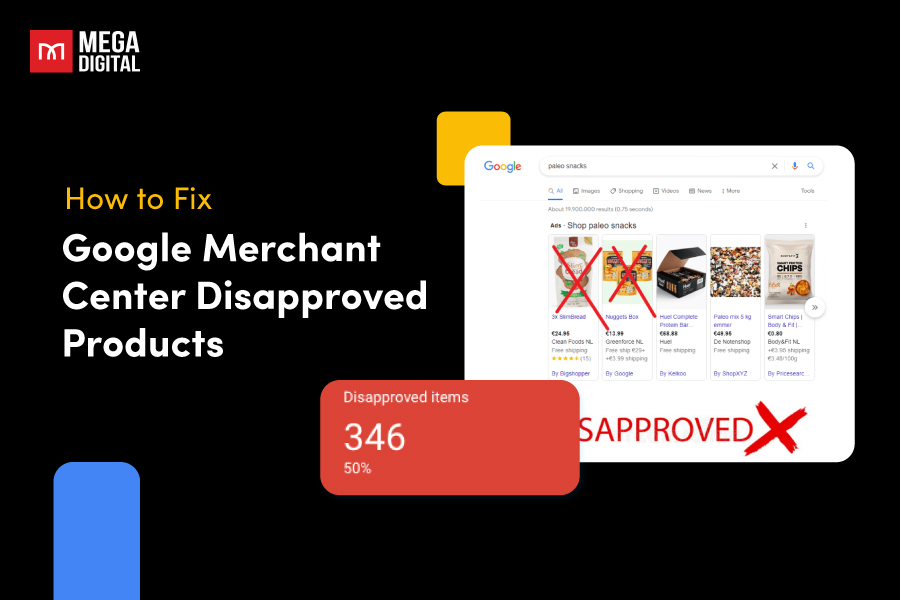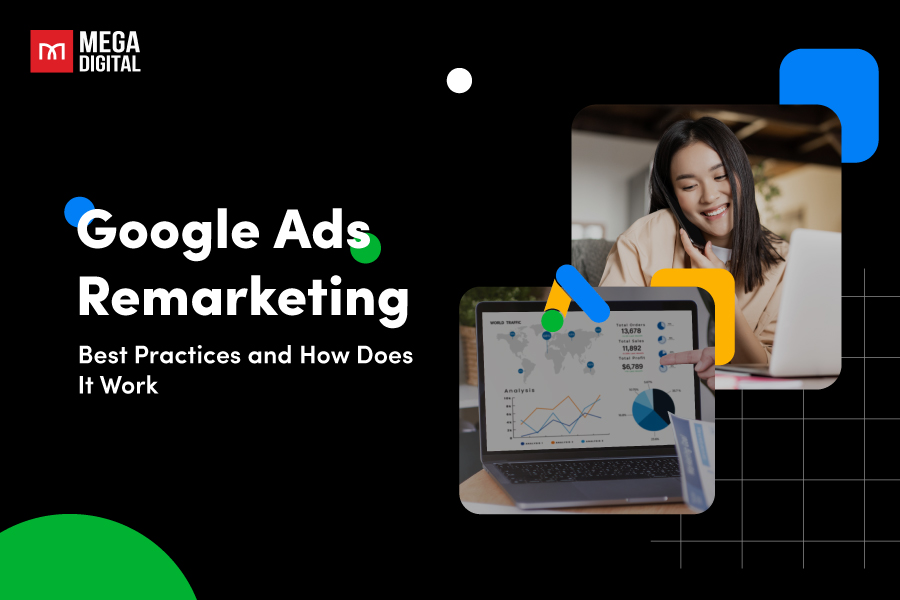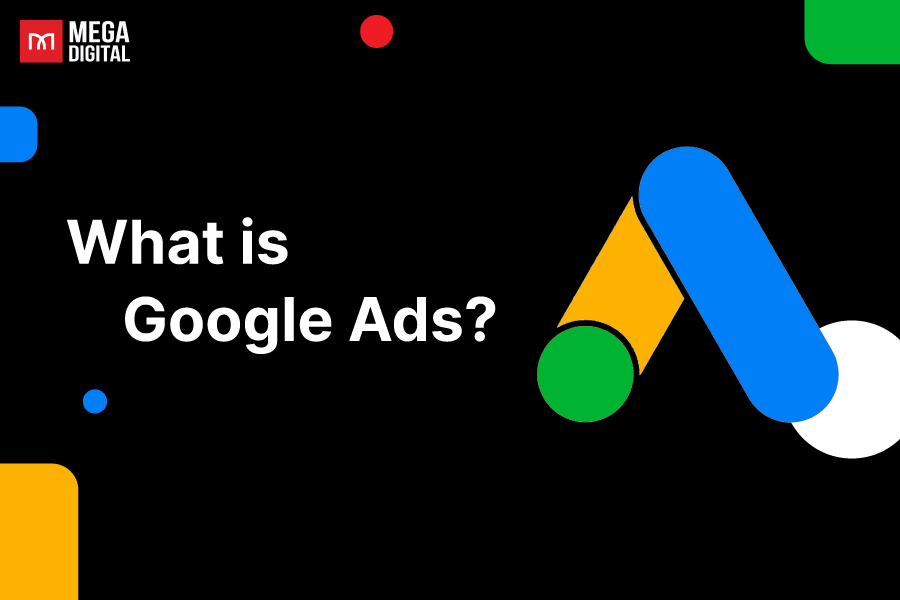Noticing a decline in the performance of your Facebook ads? There’s a good chance you’re facing the dreaded Facebook ad fatigue. It can sneak into your campaigns, causing once vibrant and engaging ads to lose their appeal. But don’t worry, I’m here to help! In this blog post, I’ll explain what is Facebook ad fatigue, as well as effective strategies to keep your ads fresh and your audience engaged.
What is Facebook Ad Fatigue?
Facebook ad fatigue occurs when your target audience becomes overly familiar with your ads, leading to a decrease in their effectiveness. Imagine constantly seeing the same billboard on your daily commute; eventually, you become immune to its message. This is precisely what happens with Facebook ads if they’re displayed too frequently to the same audience members.
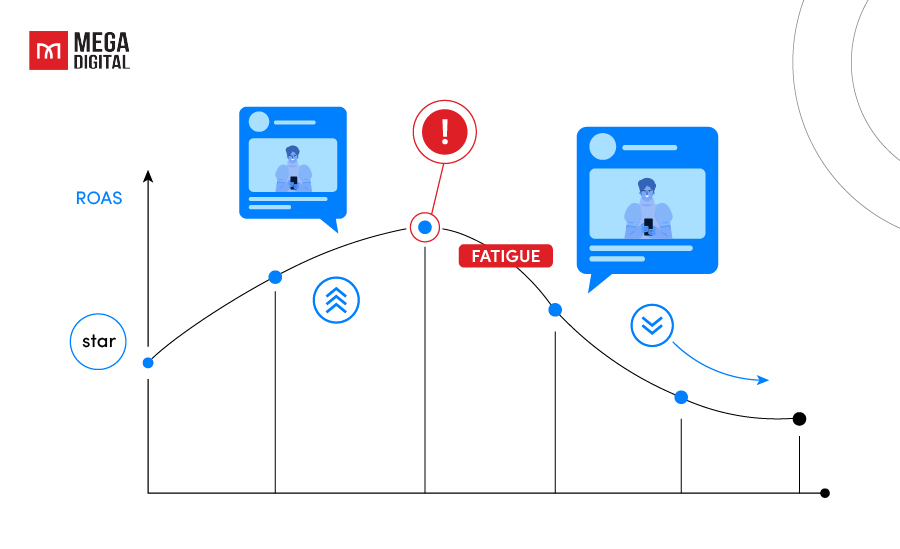
There are two main types of Facebook ad fatigue to consider:
1. Creative Fatigue
Creative fatigue on Facebook ads, also known as creative limits, occurs when your ad creatives, including images, videos, and copy, become stale and repetitive. If audiences encounter the same creative ad on their feeds excessively, typically more than 2 to 2.5 times, according to expert observations, they will get fed up with your ad and lose interest in your offerings.
It can lead to users reporting or blocking your ad, which subsequently diminishes your brand awareness and impressions. More critically, it can increase the cost per result and decrease conversions, negatively impacting your overall ad performance.
2. Audience Fatigue
Audience fatigue is an advanced case of ad fatigue that occurs when your targeting parameters are too narrow, and the same audience sees your ads repeatedly to the point that they completely ignore them.
If you don’t notice audience fatigue soon enough, chances are new creatives and lowering budgets won’t help your affected ads recover.
4 Key Symptoms of Facebook Ad Fatigue
The sooner you recognize the signs, the quicker you can take action to refresh your campaign and get it back on track.
So, how do you identify Facebook Ads creative fatigue? Here are some key indicators to watch out for:
1. Performance decline
Decreased Click-Through Rate (CTR)
This refers to the number of clicks your ad receives relative to the number of impressions (times it’s displayed). A significant drop in CTR suggests your audience might be tuning out your ads.
Rising Cost-Per-Click (CPC)
As your ad performance weakens, Facebook may start charging you more for each click you receive. An increase in CPC can be a sign that your ads are no longer resonating with your target audience.
Decreasing Return on Investment (ROAS)
A significant decline in ROAS over time suggests your ads might not be generating the desired return on investment, potentially due to fatigue-reducing CTR or conversions.
2. Engagement metrics drop
Engagement metrics include likes, shares, comments, or any action a user takes when they see your ad. A sudden drop in overall engagement metrics indicates that your ad is failing to capture user attention and spark any real interaction. Your audience has become so disengaged they’re not even bothering to react to your ads anymore.
3. Frequency increases
The Frequency column within Facebook Ads Manager shows how many times, on average, your target audience has seen your ad. A high frequency (e.g., above 3) can be a red flag for creative fatigue. Seeing the same ad repeatedly can lead to banner blindness, where users subconsciously filter out your message.
4. Campaign duration is prolonged
Generally, ad fatigue sets in after a prolonged period of exposure to the same creatives and messaging. Analyze how long your ad campaign has been running with the same creatives. If it’s been several weeks or more without a refresh, fatigue might be the culprit behind declining performance.
How to Diagnose Facebook Ad Fatigue?
1. Automatic Notifications
Facebook will send you a notification in the delivery column of your Ad Manager account with the warning message “Creative fatigue”. However, this notification is only triggered for a limited range of ad types and when a single ad is running, so it’s not a reliable method for identifying ad fatigue.
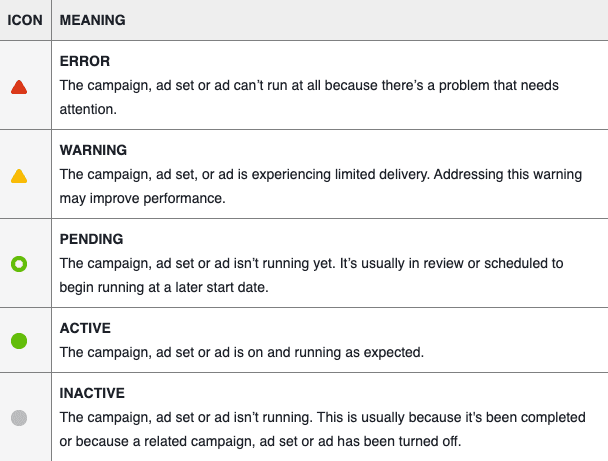
2. Manual Diagnosis
For a more hands-on diagnosis, you should compare the frequency and cost per result metrics in your Ads Manager account.
If you notice an increase in both these metrics, your ad is likely experiencing creative fatigue.

3. Facebook’s Delivery Insights
Facebook Ads Manager offers Delivery Insights within the campaign overview section. These insights can reveal potential issues impacting your ad delivery, such as limited reach due to narrow targeting or creative assets that might not be resonating with the audience.
If the cost per result of your current ad surpasses that of your previous ads, yet is less than twice the amount, Facebook will display a status of ‘Creative Limited’. However, if the cost per result equals or surpasses double the cost of your previous ads, a ‘Creative Fatigue’ status will be indicated.
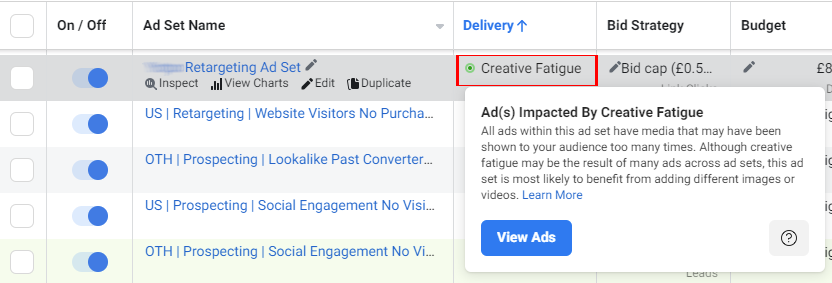
How to Recover from Facebook Ad Fatigue?
If you suspect your Facebook ads are experiencing creative fatigue, here’s what you can do:
1. Refresh your ad creatives
One of the most effective techniques to overcome ad fatigue is to refresh your ad creatives.
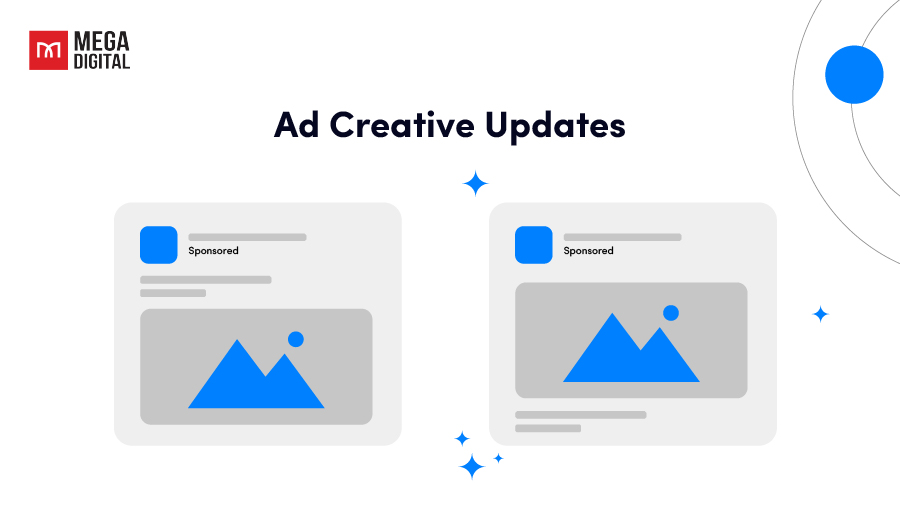
- Experiment with ad formats: Don’t stick to a single format. Explore options like image ads, video ads, carousel ads, and collection ads to keep your audience engaged.
- Utilize high-quality visuals and video: Attention spans are short online. Captivate your audience with visually appealing images and captivating videos that showcase your product or service in action.
- Crafting Compelling Ad Copy: Write clear, concise, and benefit-driven ad copy that speaks directly to your target audience’s needs and desires. Highlight unique selling propositions (USPs) in your ad headline, together with strong calls to action (CTAs).
2. Expand your audience reach
While a well-defined target audience is crucial, overly narrow targeting can lead to creative fatigue. Revisit your targeting parameters and consider broadening your reach
Some audience tweaks to consider include:
- Age
- Gender
- Interests
- Behaviors
- Geographic location
Facebook offers a vast array of targeting options based on demographics, interests, behaviors, and more. Don’t be afraid to experiment with new targeting options to discover untapped potential within your audience pool.
You can utilize Facebook’s audience insights tool to gain valuable data about your current audience and explore potential new segments that might be receptive to your message.
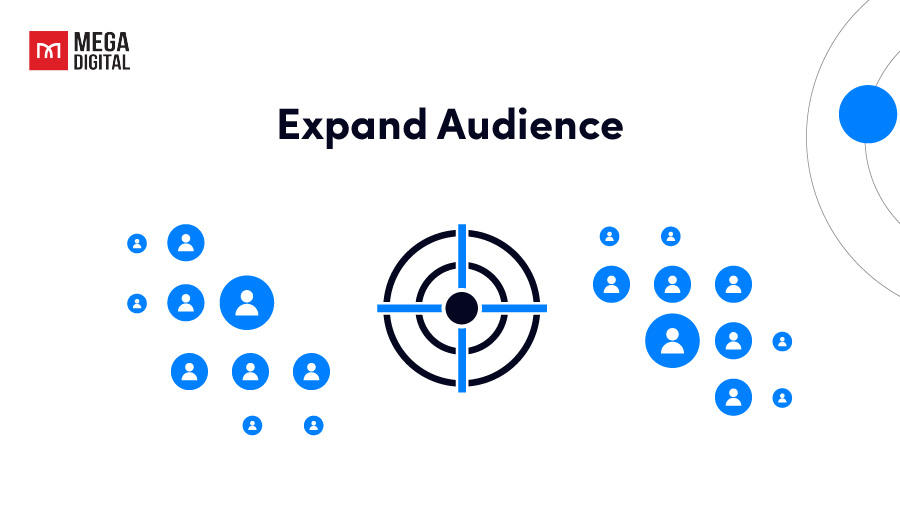
To better expand your audience, testing different Lookalike Audiences is a great method you should follow. This feature lets you target new users with similar characteristics to your existing customer base, often resulting in a better click-through rate (CTR) and lower cost-per-click (CPC) compared to standard audience adjustments like behavior or interest-based targeting.
3. Lower your ad budget
When your ad shows symptoms of fatigue, lowering your ad budget or changing your Facebook bidding strategy is much like providing first aid. It’s a good way to prevent that fatigued ad from draining your budget. Once you have confirmed that it’s not squandering your ad spending, you can devote more focused attention to it.
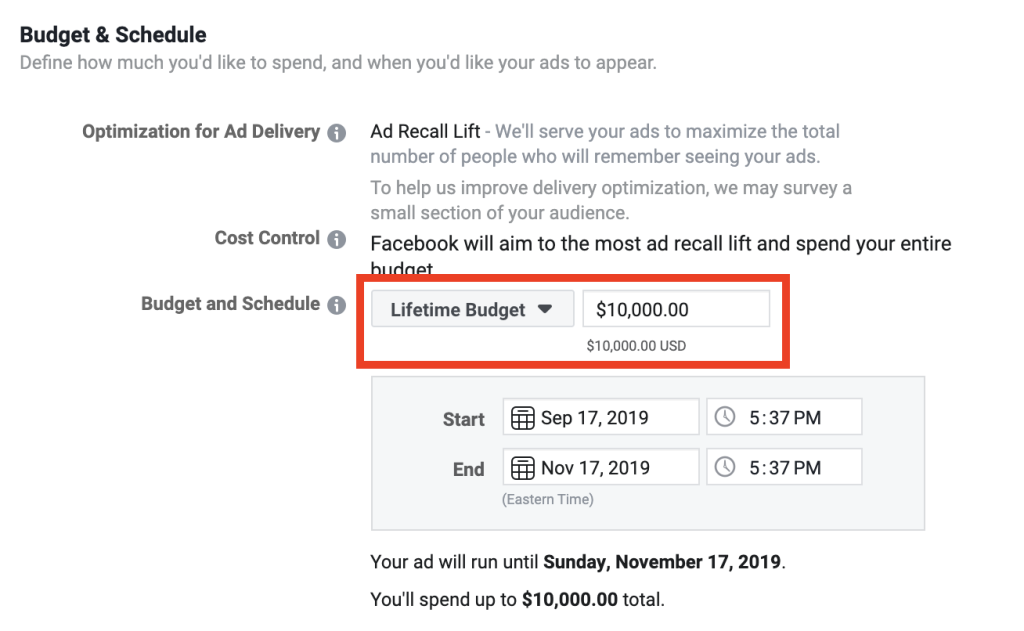
4. Run ads at scheduled times
Sometimes, all your audience needs is a break. Consider scheduling your ads to run during specific times of day or days of the week when your target audience is most active. This prevents them from seeing your ads too frequently in a short period, allowing for a natural refresh and renewed interest.
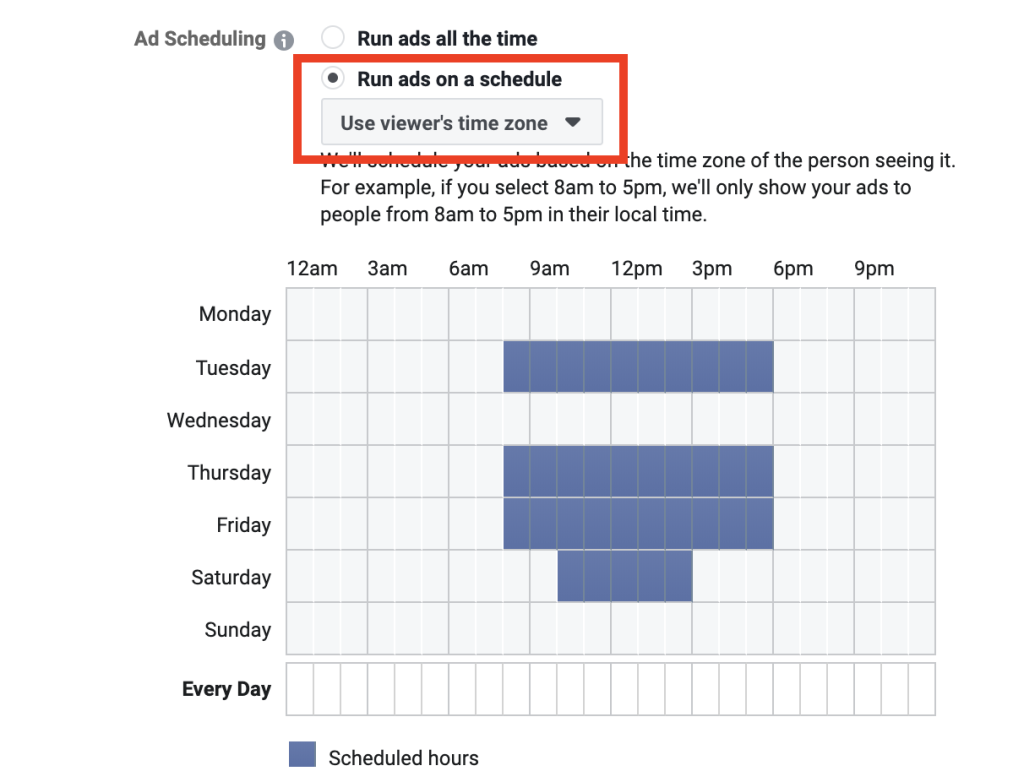
>>> Read more: Find the Best Time to Run Facebook Ads for Optimal Result
5. Set a frequency cap
Frequency caps are a powerful tool to help you combat ad fatigue. By implementing a frequency cap, you ensure that even though your customers may encounter the same ad repeatedly, they aren’t exposed to the same content on a daily basis. Keep in mind that the more frequently your customer views your content, the more likely they are to block it out.
At the Campaign stage, select Reach and Frequency as your buying type. Within your ad set, navigate to the Optimization & Delivery section. Here, you can modify your frequency cap to control the exposure of your creative content.
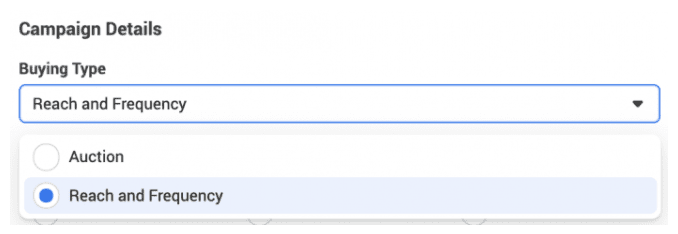
In your ad set, scroll down to the section Optimization & Delivery. Then you can adjust your frequency cap to limit the visibility of your creatives.
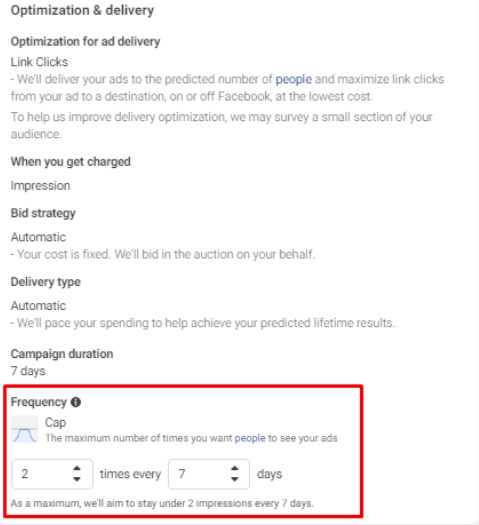
Consider serving your ad perhaps once a week. You can always upgrade to more appearances if you feel you’re missing potential opportunities based on your ad insights.
6. Prioritize conversions, not clicks
While clicks and impressions are both valuable metrics, the ultimate goal of your Facebook Ads campaign should be driving conversions. Optimize your ad sets for your desired conversion action, whether it’s a purchase, sign-up, or website visit. Facebook’s algorithm will then prioritize delivering your ads to users most likely to convert, maximizing your return on ad spend (ROAS).
Here are some examples of conversion-focused audiences you can experiment with:
- Holiday shoppers
- Discount code users
- Email subscribers
- Top 5% visitors on site
- Email openers/clickers
- 10s video views
- 50% video views
- 75% video views
- 95% video views
- 1-10% customer lookalikes
Ensure you have proper conversion tracking set up within Facebook Ads Manager. This allows you to track exactly how many conversions your ads are driving and identify areas for improvement.
Wrap up
Facebook ad fatigue is a common challenge for advertisers. However, with a strategic approach, it’s possible to overcome this issue and maintain high engagement rates with your ads. Remember, the key is to keep your content fresh, target new audiences, and experiment with different ad formats.







